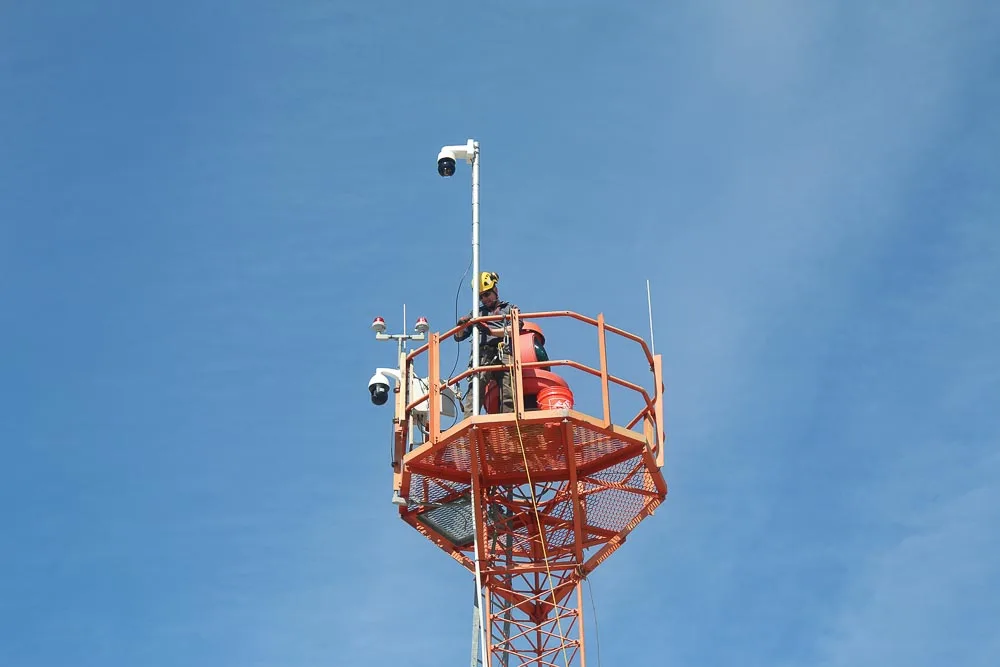By Jesse Ellison
Illustration by Matt Rota
From our July 2023 issue
The runway at the Machias Valley Airport is exactly 2,880 feet long, which leaves just enough asphalt for LifeFlight of Maine to land its twin-prop medevac plane, and only in clear weather. “We can get in there if the pavement is dry,” says John Rolfson, LifeFlight’s aviation-infrastructure engineer. “No snow, no rain, nothing like that.” So much as a puddle in the wrong place can change the equation. The runway, used mostly by small single-props, is hemmed in by Route 1 at one end and a bluff above the Machias River at the other. Despite its limitations, the airstrip is essential to operations for the nonprofit LifeFlight, the state’s only air-ambulance service since its inception 25 years ago.
LifeFlight crews get called into Machias all the time, often for the most high-stakes of cases. (Neonatal and maternal emergencies are frequent, since the town’s Down East Community Hospital is home to the only obstetrics unit in all of Washington County.) On calm days, flying in and out isn’t a problem. One of LifeFlight’s helicopters can operate easily, and so can its airplane. But when the weather turns ugly — and this is Maine, after all — helicopters can’t get in. If the plane, which can handle rougher conditions, can’t make it either, patients have to rely on ground transportation. The nearest high-level trauma center, equipped for most emergencies, is Eastern Maine Medical Center, in Bangor, 85 miles away. For patients in the “golden hour” — the crucial time immediately following a medical event — that distance can mean the difference between life and death.
LifeFlight has established landing sites around the state, from the western mountains to the north woods to remote islands. Pilots can look at weather reports for a general idea of what they’re venturing into, but until recently, getting an actual visual required having someone from a sheriff’s office or the warden service drive out and snap a cell-phone photo. That’s why, last year, Rolfson and Josh Dickson, LifeFlight’s director of aviation services, began installing some three dozen cameras, $4,000 a pop, at rural airstrips and along high ridgelines that pilots need to judge if they can safely clear.



“People don’t get that investment in rural airports is an investment in health care,” Dickson says. “For us, airports are health-care facilities.” With almost a third of Maine’s rural hospitals facing the risk of closure, according to one recent study, these airstrips become even more important. LifeFlight’s five helicopters and one plane are each equipped with half a million dollars in medical equipment. Not only do crews bring patients to hospitals, but they also deliver what’s essentially ICU-level care to the middle of nowhere. “We can drop an on-demand hospital at a moment’s notice,” Dickson says.
Rolfson calls the cameras “the next evolution in weather reporting.” LifeFlight crews can manipulate the cameras from afar to see in different directions and to zoom up to 32 times normal magnification. It’s like having actual eyes on the ground.
Within a week of Rolfson installing a camera in Machias, Dickson says, it “saved the day.” A medevac call came in from the local hospital that morning, but a storm had made air transport impossible. LifeFlight also has its own ground ambulances, so a Bangor-based crew sped to the scene, where they found a person in critical condition. Every moment counted. At LifeFlight’s command center, Dickson and his team monitored the situation. “We’d been watching the weather,” he says, “but we thought, let’s see what it’s looking like now.” Dickson zoomed in and saw that there were still wet spots on the runway, but where it needed to be, it was dry enough. “We looked at that live feed, and we said, ‘Let’s go.’”




